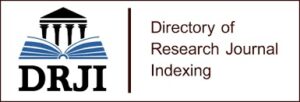AN APPLICATION OF COLLOCATIONS IN TEACHING ACADEMIC SPEAKING: A CASE STUDY AT DONGNAI TECHNOLOGY UNIVERSITY
The growth in popularity of English as a lingua franca has entailed the demand for communicative competence among learners in different contexts to interact and exchange ideas with other people from distinctive cultural and social background. The acquisition and mastery of communicative competence are inclusive of several criteria such as fluency and coherence, lexical resource, grammatical range and accuracy, and pronunciation, which pose a number of challenges for learners. However, from the perspective of intercultural communication competence, learners of English as a foreign language (EFL) commonly use English expressions based on their personal assumption and word-by-word translations from their mother tongue into English, which causes inappropriateness in English expressions. As part of cultural naturalness in language expressions, collocations are adopted to serve the functions of certain speech acts with the frequent combination of word choice to foster the sense of cultural awareness in language learners. The study of collocations is also crucial to improve learners’ communicative competence in English. Hence, this study is conducted in the context of Dong Nai Technology University Vietnam to investigate the impacts of collocation instructions on learners’ communicative competence in the format of the IELTS test. The study adopted a quasi-experimental design in a period of eight weeks in the course of communicative speaking with the expected learning outcomes of intermediate levels of the IELTS test in the presence of both qualitative and quantitative instruments including test, questionnaire, and interview from a corpus-based approach. The findings of the study have proved that collocation instruction played an important role in enhancing learners’ communicative competence in fluency and grammatical range and accuracy. In addition, the implementation entailed the higher degree of positivity in the perceptions of learners towards the new model in speaking lessons in terms of confidence and cultural sensitivity. However, the study had to handle a number of obstacles in the application such as time constraint, complexity of the collocations, and demotivation of difficulties in the acquisition of collocation. This study has also proposed a number of strategies and suggestions for other teachers in different rationales to maximize the effectiveness of collocation instruction in speaking improvement.
Keywords- Collocation; corpus; speaking performance, fluency.




















